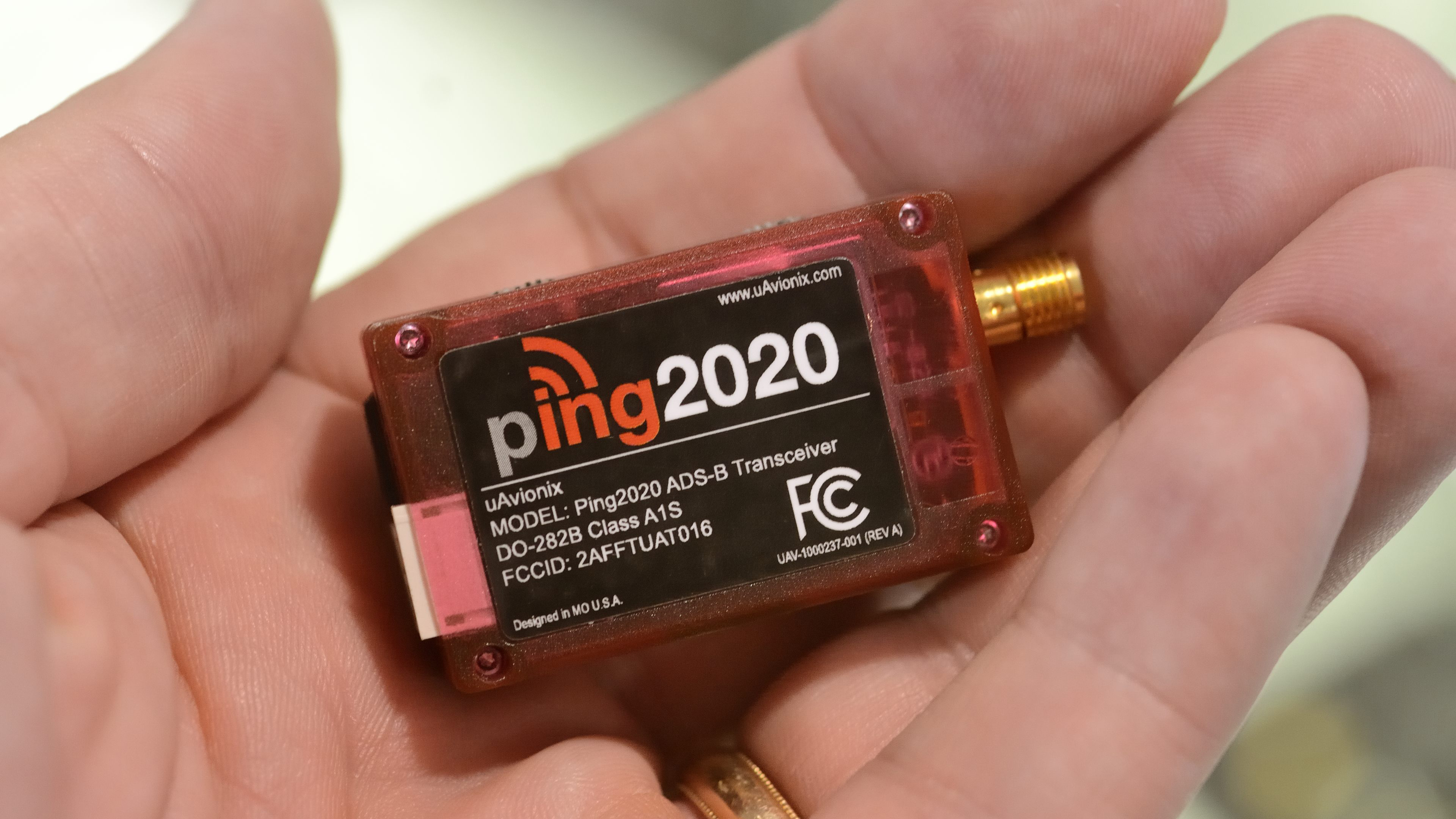uAvionix has been miniaturizing technology for UAS
The newest Automatic Dependent Surveillance-Broadcast (ADS-B) transceiver on the market also is the smallest and lightest. Palo Alto, California-based uAvionix Corp. has been miniaturizing ADS-B hardware for use on unmanned aircraft systems (UAS) and is now offering that technology in a non-technical standard order unit that could be used in experimental and potentially some light sport aircraft.
The company’s Echo ATU-20 transmits ADS-B Out on 978 MHz as a universal access transceiver, and receives ADS-B transmissions on both the 978UAT and 1090ES frequencies. It includes an integrated WAAS GPS and altitude encoder, and wirelessly interrogates the aircraft’s existing transponder. Wi-Fi data is compatible with popular apps including ForeFlight, WingX, and FlyQ, the company said; the unit weighs 75 grams and costs $1,300.
ADS-B uses satellites instead of ground-based radar to determine aircraft location, and is a key technology behind the FAA’s Next Generation Air Traffic Control System. The FAA has mandated ADS-B Out beginning Jan. 1, 2020, for flight in airspace where a transponder is required today.“Most of our team are pilots,” said Ryan Reed, who handles marketing and communication for uAvionix. “Paul [Beard, who founded the company] was out flying around in his airplane or helicopter—I don’t remember which—and he thought, ‘How can we deconflict with all the UAS?’ That was the genesis of this whole thing.”
The company says that its Ping2020 is the world’s smallest and lightest full-range ADS-B transceiver. The Ping2020 measures 25 mm by 39 mm by 12 mm, and weighs only 20 grams. It transmits ADS-B Out on 978 MHz as a universal access transceiver, and detects ADS-B Out-equipped aircraft within a 100-statute-mile radius on both ADS-B frequencies.

After creating the Ping2020, the company started looking at the other ADS-B solutions on the market. “We’re looking at pursuing other markets. We’re looking at certification. We’re even looking at the transponder market,” Reed said.
At EAA AirVenture, uAvionix announced a partnership with DJI—a large-volume drone manufacturer—on an ADS-B-based collision avoidance developer kit that would help to integrate drones into the National Airspace System, maintaining safety.
“DJI and uAvionix share a passion for safety and are motivated by the improvement that real-time air traffic information will provide to our developers using our software development kit,” said Darren Liccardo, DJI’s vice president of engineering. “DJI developers will now be able to process ADS-B data and close the loop, all within an embedded computer onboard the vehicle.”
The uAvionix Ping line of miniaturized sensors allow a drone to sense surrounding aircraft and initiate collision avoidance maneuvers based on that information. DJI’s software enables the response by allowing access to the drone’s flight control systems.
“Working in concert with the DJI Onboard SDK, our aircraft avoidance technology will provide a more complete picture of potential conflicts in the airspace,” said uAvionix Founder and CEO Paul Beard. “Through our collaboration, DJI and uAvionix will add the necessary synergy and momentum behind safely integrating drones in the national airspace.”
This was uAvionix’s first visit to AirVenture. “We greatly underestimated how interested people would be,” Reed said. More information about uAvionix is available online.



